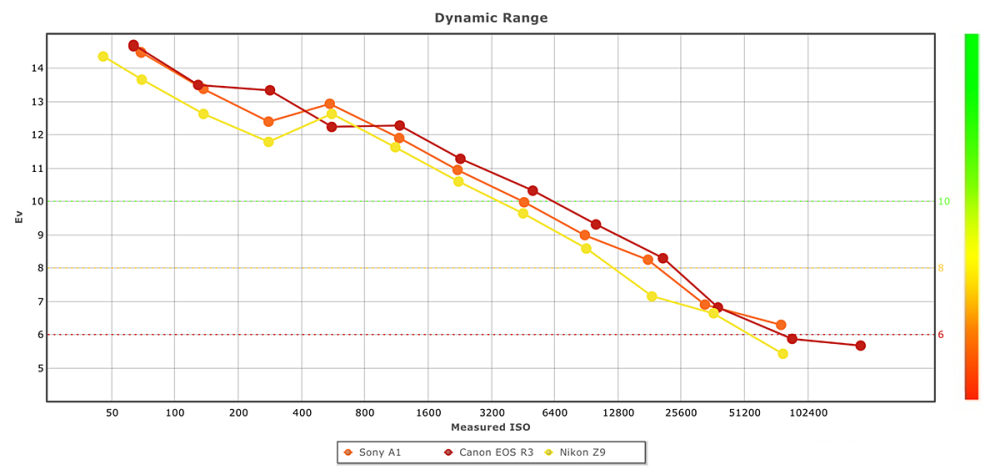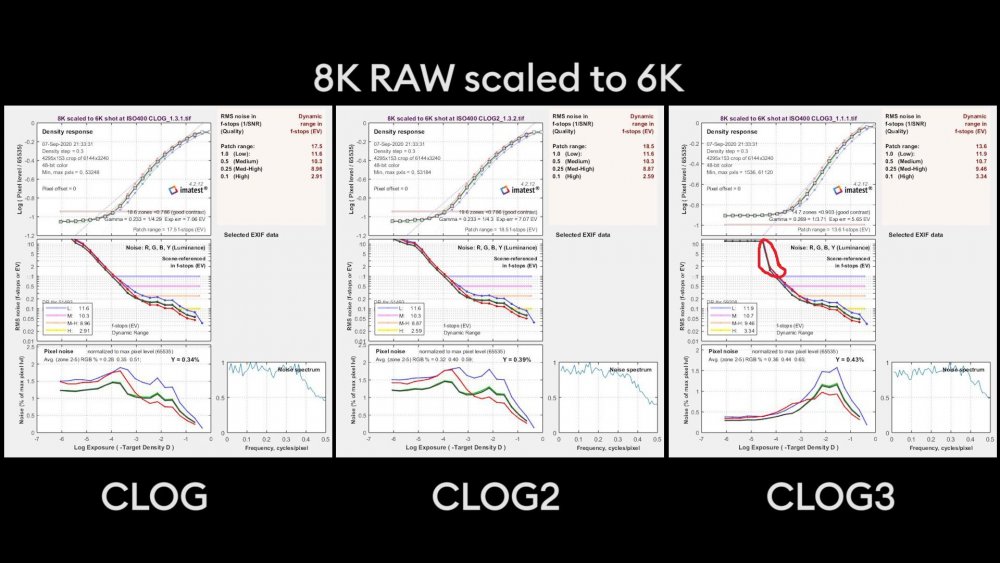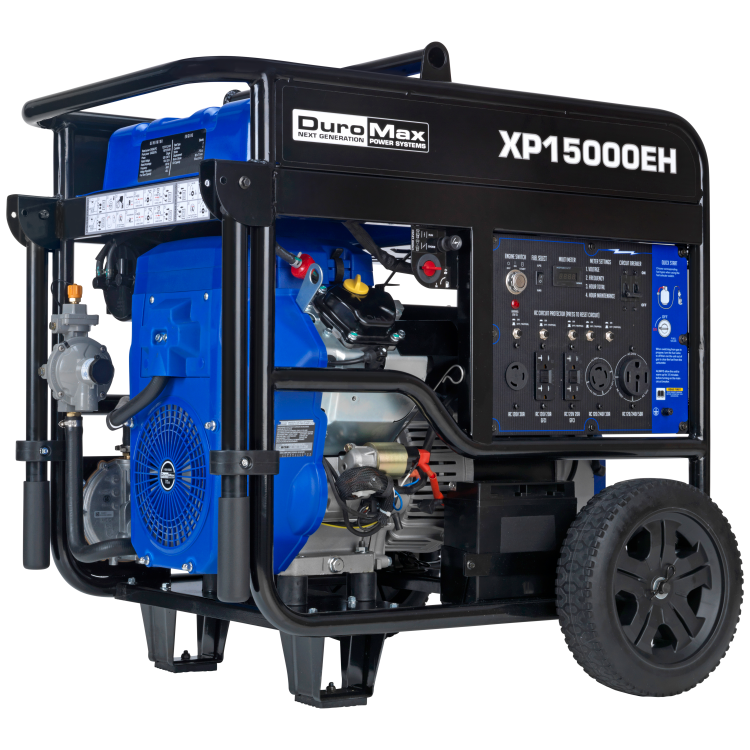
Kino
Members-
Posts
242 -
Joined
-
Last visited
Content Type
Profiles
Forums
Articles
Everything posted by Kino
-
I've had my eye on the Sony A1 for a long time. I was hoping Sony would announce the A1 II, so that the prices on it could drop a little. At $6500, it is a bit steep. LongGOP 8K is also not ideal, but the video footage overall is very impressive for a mirrorless full-frame camera. The DR, roll-off, ISO performance, and texture are all amazing. These are video frame stills if you can believe it!
-
This is true. The footage looks good here because of the limited use case, but you can already see some issues with dynamic range in the shadow areas. Here is another example that more effectively demonstrates both the strengths (color depth) and the limitations (dynamic range) of the Z9's NRAW: The camera produces beautiful colors in NRAW and ProRes RAW, but the dynamic range is a problem: You can see how easily the highlights clip in the footage above. Here are other examples of highlight clipping, along with a tutorial on red and blue channel clipping:
-
Although the grade is always important, NRAW's rich tonality is once again evident in this beach footage, which has been interpreted in linear color space as opposed to N-Log gamma (where DR could be better preserved). Despite the varying workflow, the expansive tonal range is consistent with Nikon's own Venice clip as posted above.
-
-
I managed to download a few brief 8K 50fps NRAW NEV samples from another forum and view them in the latest version of Resolve (18.1.4): https://forum.grassvalley.com/forum/editors/editing-with-edius/572094-n-raw-from-z9-sample-download They are now listed as 12 bit according to Nikon specs. There must have been a decoding problem that has been solved since Resolve 18.0. Perhaps NEV files are captured in 12 bit log and Resolve previously converted them to 14 bit linear. It is hard to know what the issue was as TicoRAW compression is new to the camera world (hence the RED lawsuit). The same TicoRAW conversion that the Z9 utilizes when compressing for photos in the "High Efficiency" RAW mode at 14 bit readout is also utilized to create the NRAW files. In photo mode, this is limited to 20fps at full sensor readout (8256 x 5504). Although the video mode uses a crop (8256 x 4644), which produces a 38mp image, it doesn't seem possible that you could get 14 bit RAW video at frame rates higher than 24/25. The Canon R3 could do 14 bit RAW at 30fps with its 6K video, but Canon would never do such a thing! That would obliterate its current cinema line. In any case, the rich color tonality we were seeing in the Z9 footage is still there and the files edit nicely on a 4K timeline. They are perhaps not as optimized as R3D files, but they should be easier for editing than Canon 8K RAW Light.
-
It seems that he added the NR on the Z9 N-RAW 8K in post using Resolve, but it does not include downsampling. With downsampling to 4K, you should be able to get another .5 stop. So, if you take out the NR but downsample to 4K, you should be back at around 12.5 usable stops. As for why Nikon did not advertise the 14 bit NEV files, I'm not entirely sure, but I plan to find out . . .
-
The Z9 test shows 12.5 usable from a possible 15.5 overall on an 8K timeline. That is not bad at all. NR can add only about half a stop. Compare that with the R5C in 8K RAW, which shows only 11 usable from a possible 13.4: If you scale 8K down to 4K, you can improve the Imatest result for both 8K cameras, so you have to keep that in mind when comparing with lower resolutions. For example, the 4K C70 with its DGO sensor attains 13 usable from a total 15.3 with NR applied in-camera: In terms of DR, Dxomark measured the Z9 RAW photo performance at 14.4 EV at its base 64 ISO and just over 12 EV at ISO 800, which is the native ISO for video: https://www.dxomark.com/nikon-z9-sensor-test/#:~:text=As for the individual scores,at the same ISO sensitivity. All that is very consistent with the Imatest DR above and very similar to other 8K cameras at the same ISO. What interests me more is the color depth comparison between photo and video, which is the only way to test whether the color information is retained in the 14 bit NEV files.
-
Unlike the Canon R5, which switches to a 12 bit readout when engaging the electronic shutter for photo and video, the Z9 electronic shutter is 14 bit, as that is all it has. Therefore, it is possible for the 14 bit readout to carry over to video, which Resolve apparently confirms at 24 fps in this example: Of course, it could still be a 12 bit source wrapped in a 14 bit file, or there could be an error in how Resolve interprets the files. However, looking at the N-RAW footage, I'm seeing a color depth and tonal range that I don't associate with 12 bit cameras. This is very close to 16 bit R3D files or 14 bit RAW photos:
-
Nikon really dropped the ball when they released this camera with N-Log, which is not capable of maximizing the sensor's DR. They need to release "N-Log 2" in firmware if they can, since all the non-RAW formats in the camera still suffer from N-Log's limitations. The tests linked above demonstrate the significant difference between N-RAW processed in N-Log gamma and N-RAW when using ARRI Log C in Resolve:
-
-
All this proves is that NRAW may not be optimized yet in N-LOG gamma on Resolve, as other users have reported much greater DR using different gamma profiles: It is a very new raw format and not user friendly just yet. Your article also fails to take into account the impressive color depth of NEV files, which Resolve lists as 14 bit RAW. Is Nikon secretly giving us 14 bit RAW? All I can say is that the NRAW files display rich color and tonality that I've rarely seen on other mirrorless cams shooting 12 bit RAW: It will not replace a $30K RED V-RAPTOR, but it does amazingly well up against RED Helium: If you follow this channel, you will notice that they switched from using the A1 to the Z9 when the latter received the RAW update.
-
I noticed the banding but assumed it was YouTube compression since I haven't seen it on C70 footage before. I believe uploading in 8K fixes some of these compression issues on YT. What I love about the C70, in contrast with the R5's more brittle image, is the highlight roll-off, color saturation (especially in low light), and overall cinematic quality, which are all evident in those clips. The image is nice and creamy:
-
C70 in low light featuring rich tones and subtle gradations: RAW in this camera would be amazing, but you don't really need it. The camera is already reaching C300/C500 RAW quality with XF-AVC:
-
Canon rep also confirms that there is no open gate, but leaves door open for future firmware (14:10):
-
Correction: 16 bit is a number from CVP's claim on the C70's DGO. But I don't see how they came up with that number . . . Technically: 2 x 14bit (16,384 gradients) = 15 bit or 32,768 gradients. Still, it is much more than the 12 bit (4,096) in the R5's video mode.
-
As proven by numerous tests, 10-11 stops is the best DR that the R5 can yield when shot in RAW. R5/R5C has no Clog2 during the RAW encoding. Selecting the Clog2 gamma in Resolve will yield the same DR: All of this makes sense when you realize you are comparing a 12 bit sensor readout in the R5 to a 16 bit source (2 X 14 bit readout in DGO mode) in the C70. Canon rates the C70 at 16+ stops, significantly above any claims they have made for the R5.
-
-
Official Canon preview video from the upcoming stream confirms that only one camera (i.e., R5C) will be introduced during Jan 19 event: "a new addition to the Cinema EOS family . . ." This better be good. There is no point in adding a dizzying array of codec options if the dynamic range of this camera has not been improved.
-
The current Cinema RAW Light on C200/C300 III records at 1Gbps, so this "LT" is a slightly more efficient/compressed version of what they already have. It should bring the image much closer to the levels of the C300 III RAW footage, which has better detail and colors (at the price of more noise in the shadows). Despite the rumors I posted above, I'm doubtful that Canon would undercut the R5C announcement by also revealing the new 8K cinema cameras. I would imagine a separate announcement later in the year for such revolutionary 8K DGO sensors. As you suggest, it may well be more of a "tease."
-
Correction: According to Canon, C70 Cinema RAW Light recording will be internal to the SD card: https://www.canon.co.uk/video-cameras/eos-c70/?fbclid=IwAR2nBNoajqaNaIfH_u0du_JtTESFDUEEjCauYmzFwG1wGoxkgLjGc00TtY4 Cinema RAW light The EOS C70 now offers users the ability to capture Cinema RAW Light internally to SD cards*. RAW provides you with greater image quality and flexibility in post-production. On-top of the existing 10-bit XF-AVC currently found in the EOS C70, 12-bit Cinema RAW Light LT features data rates up to 645Mbps, offering much more manageable/efficient file sizes to streamline your workflow, while retaining the same benefits of RAW. Simultaneous recording of Cinema RAW Light and XF-AVC Proxies is also supported. * firmware available in March 2022
-
https://www.canonrumors.com/more-than-just-the-canon-eos-r5c-will-be-announced-on-january-19-2022/ According to this source, Canon will also announce the following: RAW option for the C70 (this must be external); RF cinema glass; and C300/C500 8K cameras. I guess the R5C is just a stop-gap until we get those proper 8K cinema cameras. Canon is milking the R5 one more time . . .
-
True. I had to look this up as I don't own an R5. The camera switches to 12 bit readout in Electronic Shutter mode. That is a serious problem. This is why Canon Cinema Cameras since the original C300 have always used 14 bit readout at the sensor regardless of the video encode. So, the R5 sensor, at least in its current configuration, is possible destined for poor video DR even with a shiny new "C" next to it. Perhaps this is correct, but if they can add CLOG 3 to the R5, then CLOG 2 should not be a problem.
-
R5's dynamic range in stills mode is much better than the current video performance of around 10-11 stops. The R5 sensor should yield a higher DR, but the problem is the video encoding. Canon's Cinema "RAW" utilizes the Log profiles that are built into the camera. This is true on all the cinema cameras. For comparison, CLOG2 performed well on the old C300 II sensor from 2015, so there is no reason why it can't work with the much newer R5 sensor. Combined with Cinema RAW Lite, XF-AVC, upgraded ports, unlimited recording time, and the new XLR hot shoe, it makes for a compelling cinema cam far beyond the capabilities of the original R5. Withholding CLOG2 from this camera only makes sense if they want to protect the C70 or the future Cinema EOS 8K cameras.
-
Clog2 is overkill for a hybrid camera such as this. It is also not necessary as the camera has been designed with Clog3 implementation, which can theoretically yield 14 stops of DR according to Canon. There is some extra shadow detail in Clog2, but highlights are very similar to Clog3: If this camera ships with uncropped 6.7K RAW video from a 30MP BSI sensor with improved DR and RS over the R5/1DXIII, it will be very compelling at $6,000 USD for certain shooters. However, those who need a broadcast field camera should obviously purchase a C70 or FX6 and not even think about these hybrids. There you will find all your relevant log functions and the waveforms required to expose them correctly!

.thumb.png.375887800e9bbb2fd7003226df5530dc.png)
.thumb.png.c450d0effc498afa1828c851e858d045.png)
.thumb.png.e3c290c7341eb7e003d5f73f476c0608.png)
.thumb.png.db69814813cb7c8c8c3b30d6496918e7.png)
.thumb.png.0302df4d7acd9dc035406ca1a57758f7.png)
.thumb.png.1ca8f93ce0c137f0f47d486b83244779.png)
.thumb.png.39a753c9fe7b0344c491e30c9689fe23.png)
.thumb.png.b1ae1fe7c05dcd04ca0a1322014358ff.png)
.thumb.png.8f3db09f1640e51b1adb21a375795e92.png)
.thumb.png.7e94d3efb8a2b04263f86609f2ba4307.png)
.thumb.png.fc803450c0b1487659c1bd19ee021a45.png)
.thumb.png.4148bad97cace882e114cac17e40fc5b.png)
.thumb.png.479bd769d24bbe872f26137e22988ac3.png)
.thumb.png.71e43c72385af727be86f8b74847e006.png)
.thumb.png.4c103df31f80823aba197249b54f091e.png)
.thumb.png.c387eb1643ecebba1596e2b9c1770d3d.png)
.thumb.png.586299064b4e84a66522f70764053a0f.png)
.thumb.png.69410200e995efdd0520a245a1219a7f.png)
.thumb.png.7cadb08ac4d3cac65363debb16add270.png)
.thumb.png.262da8db276456f2d71133ad44eed1c7.png)
.thumb.png.da6eb4ca82d17090acb7d96d38808536.png)
.thumb.png.5fe76751eafdaafa345987862da96478.png)
.thumb.png.a7cc15e5e389ebc2df63272ec290c8f6.png)
.thumb.png.b07e21d86feb1767451e03a1bb6cbc42.png)

.thumb.png.e4e33af9f534d65dcb8b1c044f9a8e59.png)
.thumb.png.8656c8df7ed6fb2aea44728da2b9b42c.png)
.thumb.png.5babc30e194124a4f7f827ffd66892e4.png)
.thumb.png.694807a4c1e7734c1b636fe93f5c4a68.png)
.thumb.png.12ad767030eb47fdef7db5d984186936.png)
.thumb.png.bf3e8de3be46e2248928f1a7ffb39e74.png)
.thumb.png.aac318b0b463b6b938a0b4817d23bab1.png)
.thumb.png.3d3bf4297fc5cce0e507d3e3b7dd513b.png)
.thumb.png.27413d335ae0d981526ebca0d3c1899d.png)
.thumb.png.a580c4691d0846d29f30fc844094bb4a.png)

.thumb.png.8adea588cd48071de5fd3f2982d09d14.png)
.thumb.png.0681a0bf7c0f4a0386824296f992e74d.png)

.thumb.jpg.c07e20d12cfc246060aa3f20ce7a5dc8.jpg)
.thumb.png.1a883c0dc565f97f4d991979d512658a.png)
.thumb.png.2fb38c234f9cc6ce6b88b8f5acaa816c.png)
.thumb.png.b47a42fb8bd9f277d6a67684d98bba6b.png)
.thumb.png.2398ff91253be4e6a95e644b8d7db3da.png)
.thumb.png.d1f819581fe266a53cd3a85b94f0513d.png)
.thumb.png.c3c7c3c6728a96f8efe8d71dd6a4d083.png)
.thumb.png.a920103b9113c4ef00786a2787633c07.png)
.thumb.png.e9904c1641c4f79ffc32873b7e83aef8.png)
.thumb.png.ddb42ad9ca6e1248537daf2e02616724.png)
.thumb.png.5bf0a18c8d7c44423076f965f6cf7ebe.png)
.thumb.png.cf982aeae0a9e026f3ada88691457c96.png)
.thumb.png.e38242605f7bac9d470dbebf3d355f36.png)
.thumb.png.c5b43a809dce3e3d2f43c7817b504308.png)
.thumb.png.7107811618dcc4e49c372946ca2f0885.png)
.thumb.png.7fd8a03250534e9dcc9a9861cc461a56.png)
.thumb.png.71d2b3796e9c613ee5e063b7996ac360.png)
.thumb.png.029e6798b0c0b4887c56f351f4583eab.png)
.thumb.png.ded69724b3848ed99aa48c47c9dc25d4.png)
.thumb.png.9b235b73b8a466d0a73614c3b932a9fd.png)
.thumb.png.0af8fd67eff1214e8e389ec6dcd4fa45.png)
.thumb.png.d5b551360c61ac3f0e63c8dc1b5273da.png)
.thumb.png.5985ebe69a2d4421127459ddffec7d8c.png)
.thumb.png.a7e0d5ff250f41545b8cf1d59ff9483e.png)
.thumb.png.dd9eb0c458a3a32d86d433719cd20439.png)
.thumb.png.f9d50cb888e3229bcbdb398c872f09d2.png)
.thumb.png.64eb1a492e58f3db34892653e35d2f5f.png)
.thumb.png.9efec056f4c2441ba903998e16203d1f.png)
.thumb.png.606ee71756874918c0e62062c3aeecc4.png)

.thumb.png.f2525d8549a2790b351238620d3d6260.png)
.thumb.png.34b5823868b74e7d601158bf09054cd9.png)

